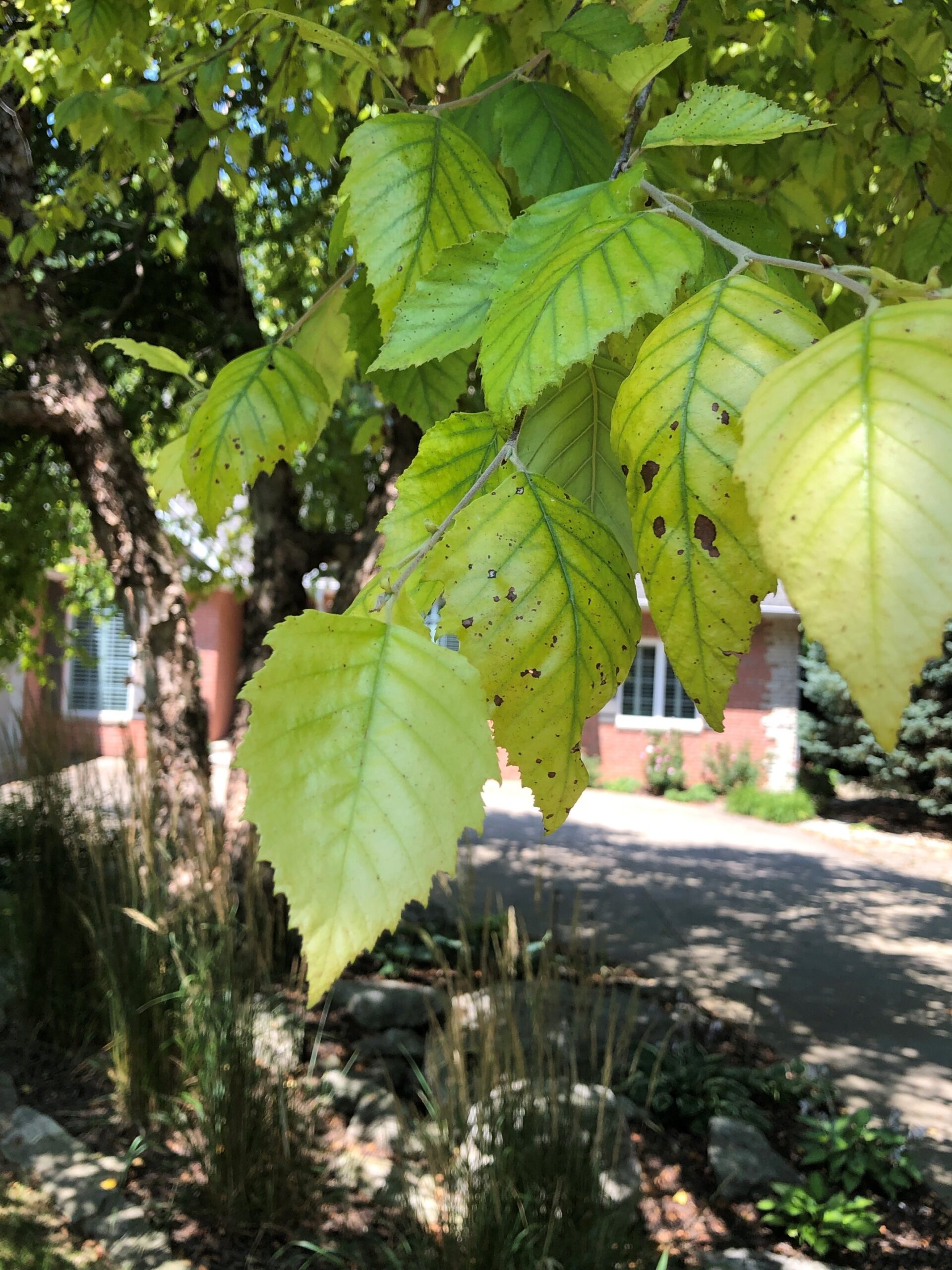Deep Root Fertilization Nutrition Program – For maintaining growth and tree health. This option offers a mix of macro and micro nutrients that are specifically designed for trees and shrubs. This blend is recommended for young trees and as well as a maintenance feeding for established trees.
Bionutrients – Recommended for trees under stress and in decline. The Bionutrient blend contains Mycorrhizae and beneficial bacteria. Mycorrhizae acts as an extension to the tree’s root system. Beneficial bacteria help release nutrients from the soil. The Bionutreint blend increases available nutrients and water while enhancing the size of the tree’s root system.
At Alive Tree Care we treat hundreds of trees for Iron and Manganese deficiencies. Trees develop deficiencies or chlorosis due to poor soil quality or an elevated soil pH. If your tree has leaves that are light in color or turning yellow, these are signs that the tree has chlorosis. In most cases the tree requires yearly treatments and will improve over time. Trees most often suffering from chlorosis include Oaks, Maples, Birch and Sweet Gum. If left untreated, most trees with chlorosis will be stunted and slowly decline over a number of years. We have several ways we can treat for chlorosis including trunk injections, deep root fertilization and soil drench applications
